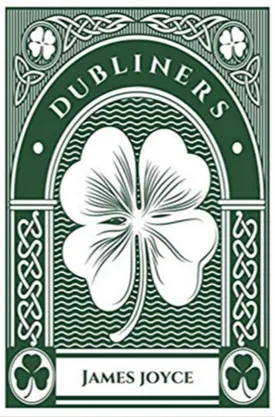Dubliners, by James Joyce, is a collection of fifteen short stories published in 1914 by English publisher Grant Richards. It is one of the most well-known works of modernist literature and frequently appears in ‘best of’ lists. The stories mainly focus on the everyday life of the characters who live in Dublin, providing insight into aspects such as class, Irish culture and the struggle for independence.
The story collection is notable for its use of themes, as well as its lack of closure. Joyce’s writing style puts its emphasis on the everyday details of life rather than the grand narratives of history. This has led to some commentators dubbing the collection ‘the epic of everyday life’. Joyce uses several techniques to bring the stories of the characters in Dubliners to life, such as stream of consciousness, symbolism and stream of thought.
The collection begins with “The Sisters”, in which one of the characters recounts a time, a few years prior, in which he watched a man, Father Flynn, slowly die. This sets the tone of the collection, as each of the stories will explore characters’ lives which are constantly cycled through death and rebirth.
The second story, “An Encounter”, follows a group of boys who skip school to explore the city and meet a strange elderly man. The themes of loneliness, longing and loss that characterize the rest of the collection appear in this story. In the following stories, such as “After the Race” and “Counterparts”, Joyce further explores these themes in addition to classism, entrapment, financial troubles and lack of prospects.
The eighth story of the collection, “Araby”, is especially well-known for its use of dream-like imagery to explore themes of religious faith and coming to terms with the disappointment life can bring. The seventh story “A Painful Case” examines the tragic consequences of a ‘cool’ man rejecting human intimacy due to his fear of commitment.
The tenth story, “Grace”, returns to the theme of death, with a group of young men playing a bizarre game which results in the death of one of the players. It is a darkly comic story which highlights the absurdity of basing one’s life’s decisions on arbitrary rules. The theme of faith is also explored in “The Sisters” and “The Dead”, the last and longest story in the collection.
The short stories of Dubliners all have a common thread running through them: the characters’ feelings of paralysis. Most of the protagonists of the stories seem to be stuck in their lives and unable to find any meaning or purpose in their existence, instead living in a state of limbo. Dubliners has gone on to influence countless authors since its publication, with its unique blend of naturalism, realism and symbolism.

